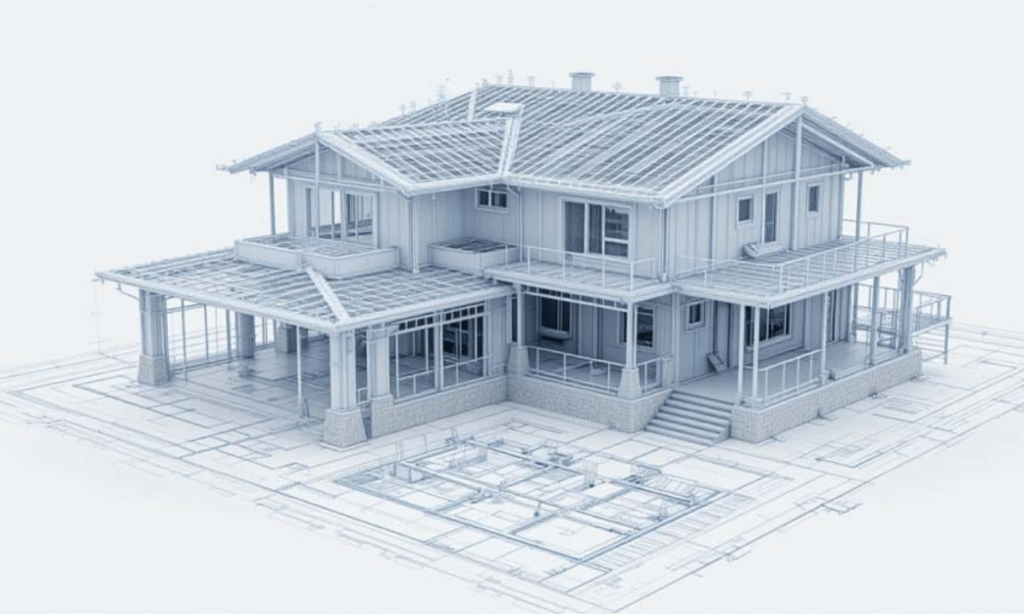In 1887, Queen Victoria ruled an empire. In 2025, you can rule your next build—with nothing but a laptop and an AI chatbot. That’s right. Designing and building a Victorian-style house no longer requires blueprints from dusty archives or a hefty architect fee. It requires creativity, clarity, and the right prompt.
AI has officially entered the chat. And it’s not just for answering trivia questions or writing emails. It can sketch your floor plan, suggest color palettes, optimize window placement, and even recommend historically accurate trims. For free. The barrier to entry has never been lower—and the design potential has never been higher.
In this guide, I’ll walk you through how to harness the power of AI to design and plan your dream Victorian home, step-by-step. We’re talking detailed prompts, free tools, and real strategies you can use today. Whether you’re an architect, builder, hobbyist, or just someone with a fascination for gables and gingerbread trim—you’re in the right place.
Let’s build something timeless. Without the waitlist or the price tag.
What Defines a Victorian House?
Before you design one, you’ve got to understand what makes a Victorian house, well, Victorian.
Victorian architecture isn’t just a style—it’s an era. Homes built between 1837 and 1901 during Queen Victoria’s reign were known for their intricate detailing, steep roofs, asymmetrical facades, vibrant colors, and ornate trims. Key styles include:
- Queen Anne – Think turrets, wraparound porches, and vibrant paint jobs.
- Gothic Revival – Pointed arches, vertical lines, and romantic vibes.
- Italianate – Bracketed eaves, tall narrow windows, and cupolas.
Understanding these sub-styles helps you instruct your AI assistant more accurately. When your chatbot knows the difference between a mansard roof and a cross gable, your results become useful, not generic.
How AI Chatbots Assist in Designing a Victorian Home
So how exactly can a chatbot help you design a 19th-century-inspired home in the 21st century?
1. Concept Ideation
Start with a clear prompt. You can ask the chatbot:
“Design a Queen Anne-style Victorian house with three stories, a turret, and bay windows. Include a detailed floor plan with modern amenities.”
What you get: A solid draft, complete with suggestions on layout, materials, and interior themes.
2. Historic Accuracy Recommendations
AI can cross-reference historical features, ensuring your design aligns with authentic Victorian elements:
- Crown moldings
- Decorative corbels
- Clapboard or fish scale siding
This ensures your design isn’t just inspired by the past—it honors it.
3. Tool Integrations
Pair your AI chatbot with free design tools:
- RoomSketcher or Planner 5D for basic layout visualization
- Canva for mood boards and color palette curation
- Midjourney or DALL·E for AI-generated architectural images
The chatbot can guide you in using these tools efficiently by generating prompts or instructions.
4. Material & Color Palette Suggestions
Want authentic Victorian interiors? Just ask:
“What wallpaper styles were common in 1880s Victorian homes?”
Expect results like floral damasks, bold hues (burgundy, emerald, navy), and stained wood finishes.
Free Resources to Support Your Build
One of the best parts of using AI? Cost savings. Here’s a list of resources that can help you plan without opening your wallet:
- AI Chatbots – ChatGPT, Claude, Perplexity, etc.
- Open-source CAD tools – FreeCAD, LibreCAD
- Inspiration sites – Pinterest, ArchDaily, Houzz
- Google Arts & Culture – Historical references and design inspiration
The secret is in the prompt. Specificity gets better answers.
Practical Tips to Get the Most Out of Your AI Design Assistant
AI isn’t magic. It’s a tool. Use it well, and it’ll work wonders. Here are some tips:
Start with Style
Be clear about what type of Victorian you want: Gothic Revival? Queen Anne? Stick Eastlake? Each style has unique details that impact everything from exterior trim to interior layout.
Use Visual References
Upload or link to inspiration images. Tell your chatbot: “Make it look like this house but with a bigger porch and a third floor.”
Go Room by Room
Ask:
- “Design a Victorian-style kitchen with modern appliances hidden behind wood paneling.”
- “Layout ideas for a master bedroom with bay windows and a fireplace.”
Incorporate Modern Elements
Don’t feel boxed into the past. Victorian inspired doesn’t mean Victorian limitations. You can:
- Add solar panels on a steeply pitched roof
- Use radiant floor heating
- Install smart lighting disguised by antique sconces
Let the AI help you balance history with practicality.
Common Mistakes to Avoid
Even with AI, missteps can happen. Here are some to steer clear of:
- Overloading with detail too early – Start broad, then refine
- Mixing styles without understanding harmony
- Ignoring the floor plan flow – Historic homes often had poor layouts for modern living; adapt smartly
- Under-researching zoning laws – Just because it looks good doesn’t mean you can build it
AI Prompts You Can Steal Today
Here are a few plug-and-play prompts that deliver high-quality results:
- “Generate a floor plan for a 3-bedroom Queen Anne Victorian with a turret, wraparound porch, and attic library.”
- “List authentic color palettes for Victorian interiors, by room.”
- “Design a backyard garden in a Victorian theme, including a wrought iron gazebo and heirloom rose varieties.”
- “Suggest historically accurate furniture pieces for a Victorian parlor.”
- “Explain common roof types used in Victorian Gothic Revival homes.”
Real-World Example: From Prompt to Plan
Let’s take a hypothetical project:
Prompt: “Design a 2,500 sq ft Victorian house in the Queen Anne style with three bedrooms, a reading nook in the turret, a wraparound porch, and eco-friendly materials.”
AI Output:
- Open concept ground floor with hidden modern kitchen
- Parlor with bay windows and a marble fireplace
- Bedrooms upstairs with vaulted ceilings
- Turret includes a circular reading nook with skylight
- Suggested materials: reclaimed wood, low-VOC paints, solar-ready roof
This design was visualized using SketchUp (free version) and the prompt was iterated upon 3 times. The final version was not only functional but breathtakingly beautiful—and cost-effective.
Final Thoughts
We’re living in an era where imagination meets computation. AI tools are no longer futuristic fantasies—they’re practical design partners.
With a few clicks and a few smart prompts, you can bring your Victorian dream to life. For free. With historical depth, aesthetic beauty, and modern functionality.
Whether you’re a builder, dreamer, or somewhere in between, don’t be afraid to start. You don’t need a mansion budget or a degree in architecture. Just a vision—and the right AI to help bring it to life.
So go ahead. Build something that looks like it belongs in 1880—but functions like it’s 2030.
Your Victorian home awaits.



